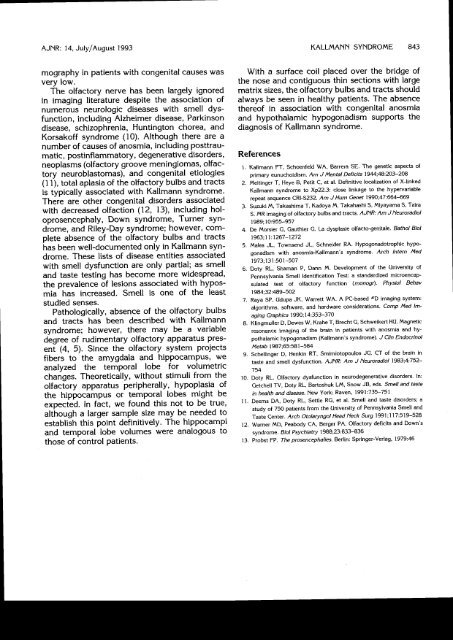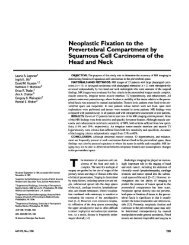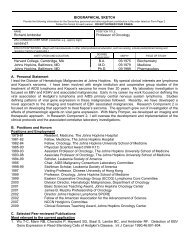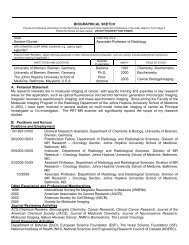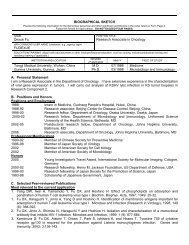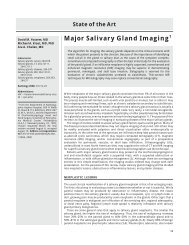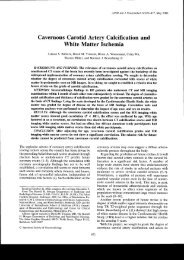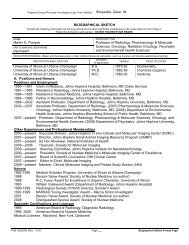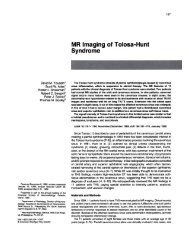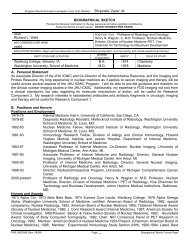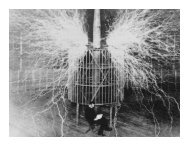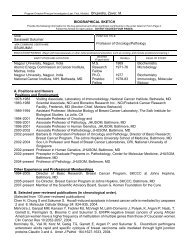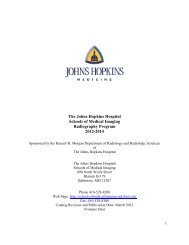Kallmann Syndromes MR Findings - Neuroradiology
Kallmann Syndromes MR Findings - Neuroradiology
Kallmann Syndromes MR Findings - Neuroradiology
You also want an ePaper? Increase the reach of your titles
YUMPU automatically turns print PDFs into web optimized ePapers that Google loves.
AJNR: 1,4, July/August 1993<br />
KALLMANN SYNDROME 843<br />
mography in patients with congenital causes was<br />
very low.<br />
The olfactory nerve has been largely ignored<br />
in imaging literature despite the association of<br />
numerous neurologic diseases with smell dysfunction,<br />
including Alzheimer disease, Parkinson<br />
disease, schizophrenia, Huntington chorea, and<br />
Korsakoff syndrome (10). Although there are a<br />
number of causes of anosmia, including posttraumatic,<br />
postinflammatory, degenerative disorders,<br />
neoplasms (olfactory groove meningiomas, olfactory<br />
neuroblastomas), and congenital etiologies<br />
(11), total aplasia of the olfactory bulbs and tracts<br />
is typically associated with <strong>Kallmann</strong> syndrome.<br />
There are other congenital disorders associated<br />
with decreased olfaction (12, 13), including holoprosencephaly,<br />
Down syndrome, Turner syndrome,<br />
and Riley-Day syndrome; however, complete<br />
absence of the olfactory bulbs and tracts<br />
has been well-documented only in <strong>Kallmann</strong> syndrome.<br />
These lists of disease entities associated<br />
with smell dysfunction are only partial; as smell<br />
and taste testing has become more widespread,<br />
the prevalence of lesions associated with hyposmia<br />
has increased. Smell is one of the least<br />
studied senses.<br />
Pathologically, absence of the olfactory bulbs<br />
and tracts has been described with <strong>Kallmann</strong><br />
syndrome; however, there may be a variable<br />
degree of rudimentary olfactory apParatus Present<br />
(4, 5). Since the olfactory system projects<br />
fibers to the amygdala and hippocampus, we<br />
analyzed the temporal lobe for volumetric<br />
changes. Theoretically, without stimuli from the<br />
olfactory apparatus peripherally, hypoplasia of<br />
the hippocamPus or temporal lobes might be<br />
expected. In fact, we found this not to be true,<br />
although a larger sample size may be needed to<br />
establish this point definitively. The hippocampi<br />
and temporal lobe volumes were analogous to<br />
those of control Patients.<br />
With a surface coil placed over the bridge of<br />
the nose and contiguous thin sections with large<br />
matrix sizes, the olfactory bulbs and tracts should<br />
always be seen in healthy patients. The absence<br />
thereof in association with congenital anosmia<br />
and hypothalamic hypogonadism supports the<br />
diagnosis of <strong>Kallmann</strong> syndrome.<br />
References<br />
1. <strong>Kallmann</strong> FT, Schoenfeld WA, Barrera SE. The genetic asPects of<br />
primary eunuchoidism. Am J Mental Deficits 1944;48:2O3-208<br />
2. Meitinger T, Heye B, Petit C, et al. Definitive localization of X-linked<br />
<strong>Kallmann</strong> syndrome to Xp22.3: close linkage to the hypervariable<br />
repeat sequence CRI-S232. Am J Hum Genet 199O;47:664-669<br />
3. Suzuki M, Takashima T, Kadoya lv\, Takahashi S, Miyayama S, Taira<br />
S. <strong>MR</strong> imaging of olfactory bulbs and tracts. AJNR: Am J Neurorcdiol<br />
1989;10:955-957<br />
4. De Morsier Q, Gauthier C. Ln dysplasie olfacto-genitale. Bathol Biol<br />
1963;11:7267-7272<br />
5. Males JL, Townsend JL, Schneider RA' Hypogonadotrophic hypogonadism<br />
with anosmia-<strong>Kallmann</strong>'s syndrome. Arch Intern lvled<br />
'1973:137:507-507<br />
6. Doty RL, Shaman P, Dann M. Development of the University of<br />
Pennsylvania Smell ldentification Test: a standardized microencapsulated<br />
test of olfactory function (monogr). Physiol Behav<br />
1984:32:489-5O2<br />
7. Raya SP, Udupa JK, Warrett WA. A PC-based #D imaging system:<br />
algorithms, software, and hardware considerations. Comp l4ed Imaging<br />
Qrc Ph i c s 1990 ; 74 :353-37 O<br />
8. Klingmuller D, Dewes W, Krahe T, Brecht C' Schweikert H0. Magnetic<br />
resonance imaging of the brain in Patients with anosmia and hypothalamic<br />
hypogonadism (<strong>Kallmann</strong>'s syndrome). J Clin Endocrinol<br />
hleta b 7987 i65 :587 -584<br />
9. Schellinger D, Henkin RT, Smirniotopoulos JG. CT of the brain in<br />
taste and smell dysfunction. AJNR: Am J Neurorcdiol 1983;4:752'<br />
t)4<br />
10. Doty RL. Olfactory dysfunction in neurodegenerative disorders' In:<br />
Cetchell TV, Doty RL, Bartoshuk LM, Snow JB, eds. Smell and taste<br />
in heatth and disease. New Yorkr Raven, 1991:35-751<br />
11. Deems DA, Doty RL, Settle RG, et al. Smell and taste disorders; a<br />
study of 750 patients from the University of Pennsylvania Smell and<br />
Taste Center. Arch Otolaryngot Head Neck Surg 1991;717:5't9-528<br />
12. Warner MD, Peabody CA, Berger PA. Olfactory deficits and Down's<br />
syndrome. Biol Psychiatry 1988;23:833-836<br />
13. Probst FP. The prosencephalies' Berlin: Springer-Verlag, 7979:46


